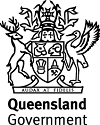Published Tuesday, 27 July, 2021 at 11:00 AM

Minister for the Environment and the Great Barrier Reef and Minister for Science and Youth Affairs
The Honourable Meaghan Scanlon
Flying-fox management grants take flight
The Palaszczuk Government has announced more than half-a-million dollars in funding for local councils right across Queensland to help manage flying-fox roosts.
Environment Minister Meaghan Scanlon said as part of the government’s $2 million election commitment to assist local governments with flying foxes, 12 councils would share in $572,000 to develop long-term management plans for the flying critters.
It’s the first disbursement of funding from the Flying-Fox Roost Management in Queensland grants, able to be delivered because of the continued rollout of Queensland’s COVID-19 economic recovery plan.
“Flying-foxes are a critical part of Queensland’s ecosystem, but recently we’ve seen flying-foxes increasingly roost in urban areas causing concerns around noise and odour,” Minister Scanlon said.
“We spoke with local councils and Queenslanders last year to create with a program that’ll help communities lessen the impacts of flying-foxes while also making sure they can continue to play their important ecological role.
Minister Scanlon said the funding would see councils carry out immediate high-priority roost management works as well as develop long-term plans and actions.
“In Gympie, we’ll see crews create buffers zones and remove weeds to attract flying-foxes to roost at abandoned sites.
“While in in Townsville, council will install canopy sprinklers at the botanic gardens to encourage flying-foxes to roost further away from play areas and neighbouring properties.
“In Brisbane, our funding will develop six permanent flying-fox roosts in the river city to protect the animals while also managing impacts to the community.
“It’s a great example of how the Palaszczuk Government is working with councils to manage environmental issues, but also support ongoing jobs through the COVID-19 pandemic. And a key part of our record $1.4 billion budget for the environment.
“It builds on expanded measures we introduced last year that can be used by councils to disperse roosts after listening to councils across the state.”
Minister Scanlon said the successful applicants for Round 1 of the grants program were:
- Gympie Regional Council, $20,507 to install a canopy sprinkler system and create buffer zones to protect flying-foxes and offset impacts on residents at an emerging roost at Commissioners Gully.
- Gympie Regional Council, $27,000 to manage weeds (particularly the invasive cat’s claw creeper) at an abandoned roost site at Widgee Crossing, with the objective of attracting flying-foxes back to this site.
- Moreton Bay Regional Council, $60,330 to install interpretative signage and a cantilevered roof over a pedestrian path that is beneath a flying-fox roost at Shirley Creek, Bongaree.
- Moreton Bay Regional Council, $40,680 to relocate an existing footpath and park furniture away from a flying-fox roost and to install associated interpretative signage at Sweeny Reserve, Petrie.
- Brisbane City Council, $37,500 to develop a management plan for six of 30 permanent flying-fox roosts in Brisbane to ensure the animals’ protection while managing their impacts on the community.
- Logan City Council, $20,000 to develop flying-fox roost management plans for two high-conflict urban roost sites at Regents Park and Mount Warren Oval Park.
- Lockyer Valley Regional Council, $30,250 to develop a long-term, region-wide flying-fox management plan for roosts within the Lockyer Valley.
- Noosa Shire Council, $24,000 to develop roost management plans for roost sites at Kin Kin and Wallace Park, Noosaville.
- Redland City Council, $63,750 to develop a city-wide roost management plan setting out an ecologically sustainable approach to flying-fox management, while managing risks and amenity impacts for Redland residents.
- Redland City Council, $20,461 to deliver a targeted education and assistance program for residents at Lotus Close, Thornlands, who are impacted by a nearby flying-fox roost.
- Rockhampton Regional Council, $23,000 to develop a long-term management plan for flying-foxes in the Rockhampton Botanic Gardens and other roost sites in the region.
- Southern Downs Regional Council, $20,000 to develop a long-term flying-fox roost management plan that balances community concerns with flying-fox management and conservation, including a targeted community engagement strategy.
- Sunshine Coast Regional Council, $29,879 to evaluate council’s current Regional Flying-Fox Management Plan, to determine how the plan and council’s flying-fox management program is achieving its conservation outcomes.
- Sunshine Coast Regional Council, $40,000 to undertake a micro-grants program for residents impacted by flying-fox roosts, offering them the opportunity to purchase products or to make improvements to their properties to reduce the long-term impacts from flying-foxes.
- Hinchinbrook Shire Council, $55,000 to undertake alternative approaches, including sprinkler trials and extensive vegetation modification, to encourage flying-foxes to relocate away from historical roost sites in Ingham to alternative roost sites outside the town area.
- Townsville City Council, $60,000 to install canopy sprinklers in flying-fox roost areas at Dan Gleeson Botanic Gardens to encourage the animals to move to a roost at the rear of the gardens, reducing impacts on playgrounds and multiple neighbouring properties.
Minister Scanlon said the Department of Environment and Science would work closely with the Local Government Association of Queensland in administering the grants program, to ensure funds are targeted to the areas of greatest need and maximum long-term benefits.
Grants are based on competitive application and require councils to provide co-funding, including in-kind contributions.
ENDS
Media contact: Francis Dela Cruz - 0420 592 078

